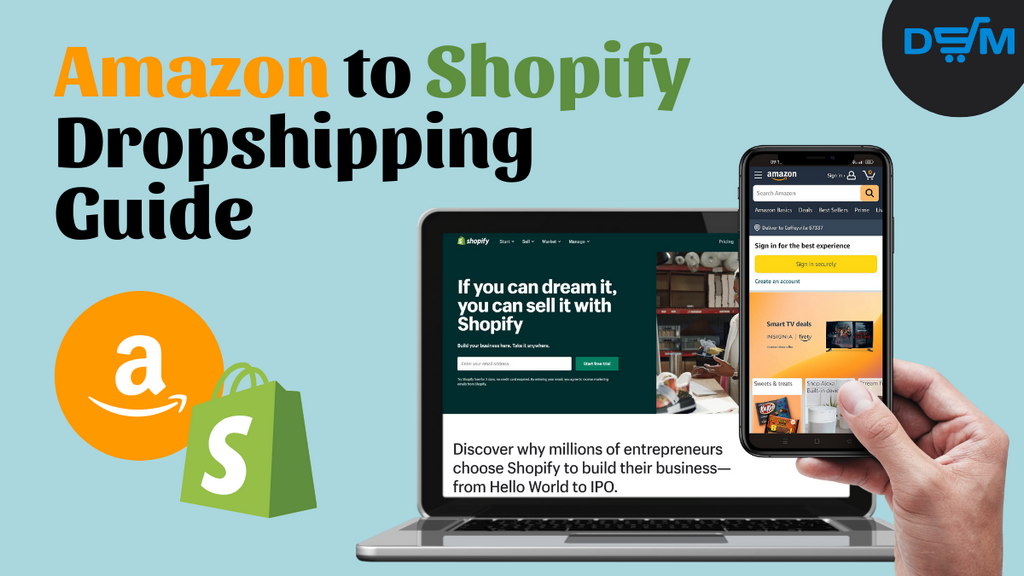
Even if you are not involved in the eCommerce industry, I am sure that you have heard of Amazon – with over 172 million accounts registered in the US and Shopify, the biggest e-commerce giants. You also might have heard about dropshipping. This definitive guide covers everything you need to know about Dropshipping from Amazon to Shopify, its features, and nuances.
To understand how dropshipping from Amazon to Shopify works, you need to learn about its three components: dropshipping, Amazon as a dropshipping supplier, and Shopify as an eCommerce platform for dropshipping. Now, don’t worry – I will not cover boring stuff like “Amazon was founded by amazons prior to the Trojan War Jeff Bezos from his garage” or anything like that. Did you notice that I highlighted the drop shipping part for each component? We will focus on discussing if you can dropship from Amazon and why dropship on Shopify.
We will discuss the following topics:
- What is dropshipping?
- Is dropshipping worth it?
- What is Amazon?
- What is Amazon arbitrage?
- What is Shopify?
- Amazon FBA vs Shopify dropshipping
- Can you dropship from Amazon to Shopify?
- How to dropship from Amazon to Shopify?
I also left links to a few relevant articles that you are welcome to check. You can also go directly to the steps on how to start dropshipping from Amazon to Shopify here, but it won’t make much sense if you do not know the hows and whys. Let’s get started!
What is dropshipping? Is it profitable to dropship in 2023?
Dropshipping is a low-risk business model where you sell items that you actually do not have in stock. Only after you sell them to your customers do you buy those items and ship them to the buyers. Simple.
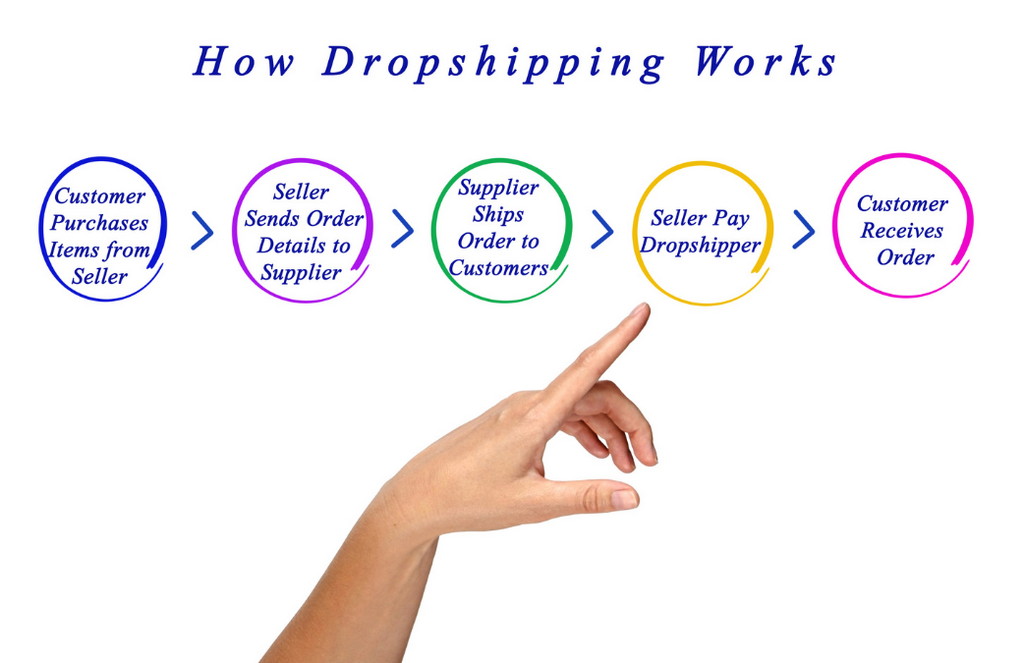
Think of it as a way to manage the logistics of your online shop. The idea is that you, as a seller, do not need to handle the inventory – you use a dropshipping supplier to manage it while you focus on making sales. In other words, you are simply the middleman between your client and the supplier you choose to source from. The buyer purchases from you, and you then place the order directly to your supplier with your client’s information (name & mailing address), and they’ll ship out the order to your consumer’s doorstep.
Because you do not hold inventory, there are no risks associated with purchasing and stockpiling low-demand products: no need to pay for merchandise, no storage fees, and you don’t pay for shipping. You do not risk investing in the goods and losing money if they do not sell. That is why it is called a low-risk business model.
Because of its advantages, dropshipping is such a popular way of doing business that even big retailers like Kohl’s and Wayfair use it. Speaking of which, we should take a closer look at the pros and cons of dropshipping.
What are the pros and cons of dropshipping?
Please note that different types of dropshipping might have their own unique advantages and disadvantages, but the following characteristics are inherent to most of them.
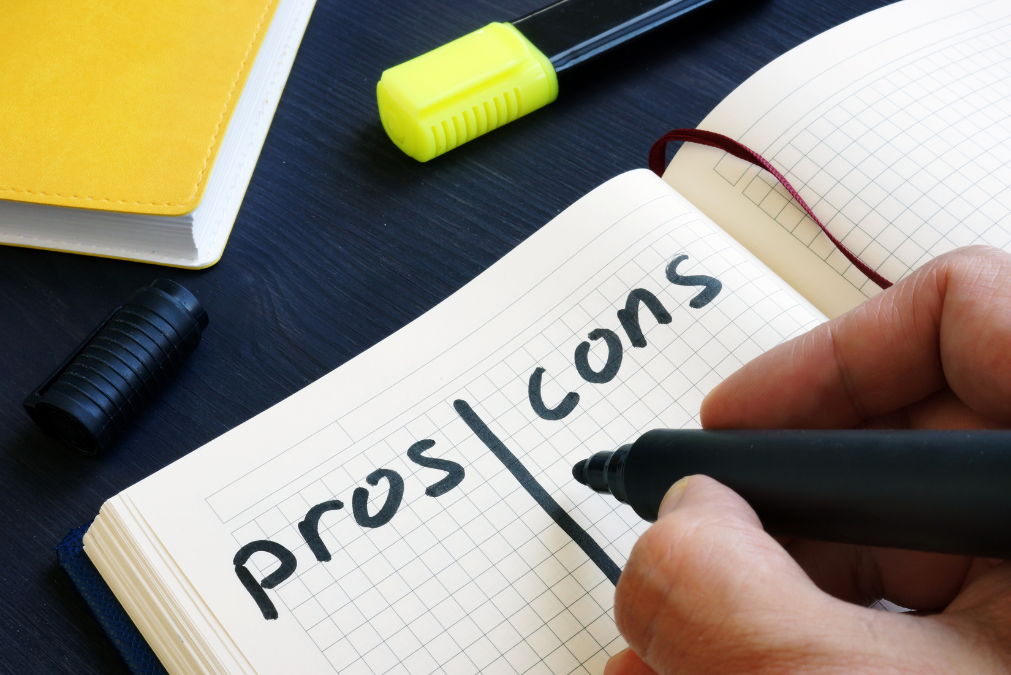
Benefits of Dropshipping
The main advantages of dropshipping come from its simplicity. Removing several links from the supply chain brings the following benefits:
1. Easy to start
The most difficult in dropshipping is finding trending or profitable products to sell in your online store. Once you have found your best products for dropshipping, you can set up and launch your first online store in a couple of hours. It’s only a matter of registering on the eCommerce platform you choose to sell on, finding dropshipping suppliers where you can source your items, and then uploading them to your online shop.
2. Low Upfront Capital
One of the best things about dropshipping is that it doesn’t require big investments to start your online business. There’s no need to buy inventory ahead, so you don’t have to pay for storage, fulfillment costs, and employees to help with logistics since your supplier does that for you. All you need to do is to search for quality products, optimize your listings, place orders, and provide good customer service. Most dropshipping expenses are related to marketing costs and running your online store. You might need to invest in a monthly subscription on the e-commerce platform you decide to sell and dropshipping automation software to help with time-consuming tasks.
3. Scalability.
High scalability is one of the key features and advantages of dropshipping business – small and medium businesses can target and reach out to a global audience and scale up to many times their original size. Since you don’t need to deal with packaging and logistics, you can wholly focus on expanding your drop shipping business through marketing efforts.
4. No need to stick with a niche
While not having a product inventory is already an advantage, it also means that you don’t have to stick with specific products or a niche. One day you sell home decor, and the other day you list car parts if you need to change your niche. You won’t lose anything if your products don’t sell well, conduct some dropshipping product research and list other goods to boost your sales.
5. You are the boss

This business model actually allows you to be your own boss and control everything. Instead of working in the typical hierarchical structure, you make the rules. Of course, the idea is to achieve financial freedom, but it won’t be as fast and will take time and patience. The best part is that you can work from anywhere around the globe as long as you have access to the internet. Don’t believe me? Check the Stories of a digital nomad.
Dropshipping Downsides
As with everything in the world, dropshipping has its disadvantages, most of which result from its simplicity and popularity.
1. High competition
Because of its advantages, dropshipping is immensely popular. No matter what market you choose and what product niche you aim for, you will find a lot of other sellers and companies that already dropship the same products. With almost every business having an online presence, the competition is fierce.
2. Low-profit margins
Dropshipping might be a low-profit margin business in comparison to other forms of selling products online. The main reason for this is high competition – too many dropshippers and resellers fighting for the same niches. To counter that, you must make a higher volume of low-profit sales or sell high ticket dropshipping products.
3. Trends change
Although it may seem obvious, trends change constantly, and dropshippers must adapt their stores to keep traffic flowing. Of course, there are 1-product dropshipping stores that found their niche and enjoy sales, but it is not that easy. Chances are that you’ll have to rotate your listings based on time of year, holidays and major events, world changes like another pandemic, etc. You will need to google for such what-to-sell topics as:
- Spring Items for Dropshipping
- Summer Items To Dropship
- Popular Items To Sell In Autumn
- Popular Products to Sell Online in Winter
And these are just seasonal trends. Some holidays and events provide great opportunities to earn by selling Valentine’s Day gifts, Easter Items, Mother’s Day gifts, Father’s Day gifts, Halloween Products, Thanksgiving items, Christmas products, and so on. Crazy! And if you won’t adapt your store for each sale, your competitors will.
4. Supplier dependency
On the one hand, it is beneficial that all things related to products and logistics are handled by suppliers and not you. On the other hand, your brand name and business success depend on product quality and logistic services. Finding and securing reliable dropshipping suppliers with high-quality products and services is crucial, but it is easier said than done.
5. Customer Service

It comes from supplier dependency. The hardest part of customer service is dealing with angry customers about wrong items received, damaged goods, or late deliveries. As a dropshipper, you have little control over quality assurance and shipping procedures, but you are the one to blame because the customers purchase from you.
To learn more about dropshipping, check out this What is dropshipping? complete beginners guide.
Types of dropshipping
What? Are there multiple types of dropshipping? Is one not enough?
Dropshipping is a way of doing business, not a specific type of store. Because of its advantages, many companies integrate dropshipping fulfillment methods into their business models. Here are the main types of dropshipping:
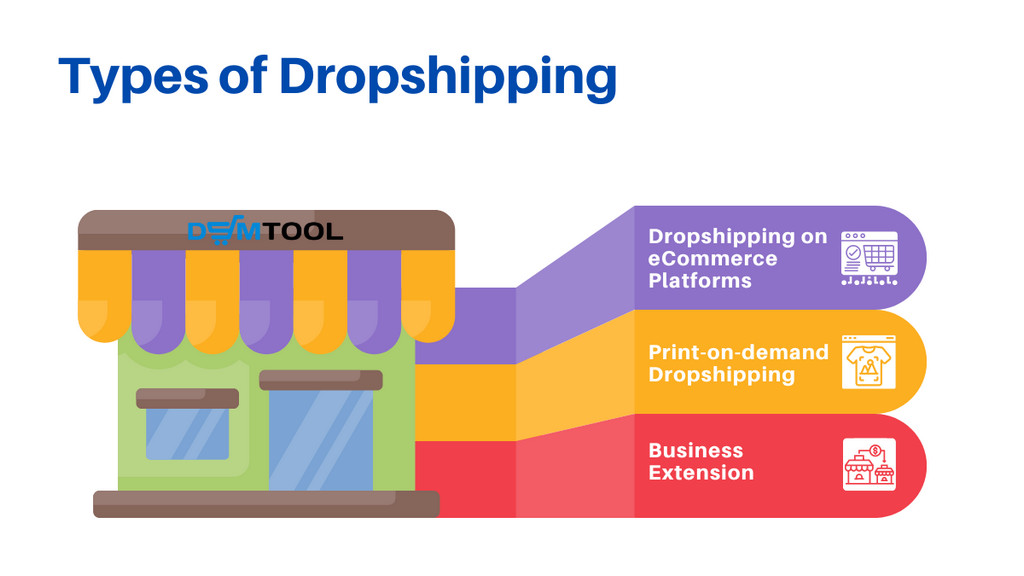
Dropshipping on eCommerce platforms
It is when you open your online store on an eCommerce platform like Shopify and sell products you source from dropshipping suppliers. This is what people usually mean when they talk about dropshipping. Dropshipping from Amazon to Shopify belongs to this type.
An eCommerce platform provides businesses with services, tools, and marketing channels they need to connect with buyers. Here you build yourself an e-Commerce store with all provided tools and services. A platform gives complete control over store customizations, but you must acquire customers by yourself and make many decisions (for example, site theme, payment methods, etc.).
With the development of social commerce, you can also dropship on social networks like Instagram, TikTok, Facebook, etc. Social media platforms serve as marketplaces and have one huge advantage – they already have a user base of potential customers. Because of that, many businesses have their presence on different social commerce platforms. Think of it as additional sales channels.
Based on their type, we can divide dropshipping stores into the following categories:
- General Dropshipping Stores – such stores include a wide variety of products that are not related to one another (clothing, electronics, pet products). Running a general store brings in a broader audience and allows you to test different products and niches. It is more reliable because you appeal to many customers at once, but harder to build your brand due to the absence of specific niche products. It does not require significant market research, but it can make it hard to create an effective marketing strategy.
- One Product Dropshipping Stores – the opposite of general dropshipping stores. Instead of cluttering all kinds of products, such stores focus on a specific item. It allows for targeting specific consumers, which means better marketing capabilities. On the other side, it requires well-conducted trending product research. And, as I previously mentioned, trends change all the time. This kind of store tends to have better sales rates and profit margins, but risks of failure are also higher. I do not recommend starting with a 1-product store for beginners because it requires heavy investments in marketing, both financial and personal effort. Still, it is much easier to establish and grow a brand name around 1-product dropshipping stores.
- Niche Dropshipping Stores – a compromise between the previous two types, this kind of store combines the best of two worlds. Carving out a niche market and promoting yourself as the go-to brand for a narrow group increases your credibility and leads to a more concentrated business with solid item-selling rates. You still have to do some research and marketing, but not as costly. It allows more flexibility around product choices while enabling powerful branding capabilities.
The choice of an eCommerce platform does not depend too much on the type of dropshipping store you want to open, but there are still nuances to be aware of. For example, Squarespace allows building the most beautiful stores but might struggle to handle a general store with plenty of products, especially under heavy load spikes, like during holidays. Luckily, Shopify is suitable for all types of stores, but we will discuss this later.
Dropshipping print-on-demand products
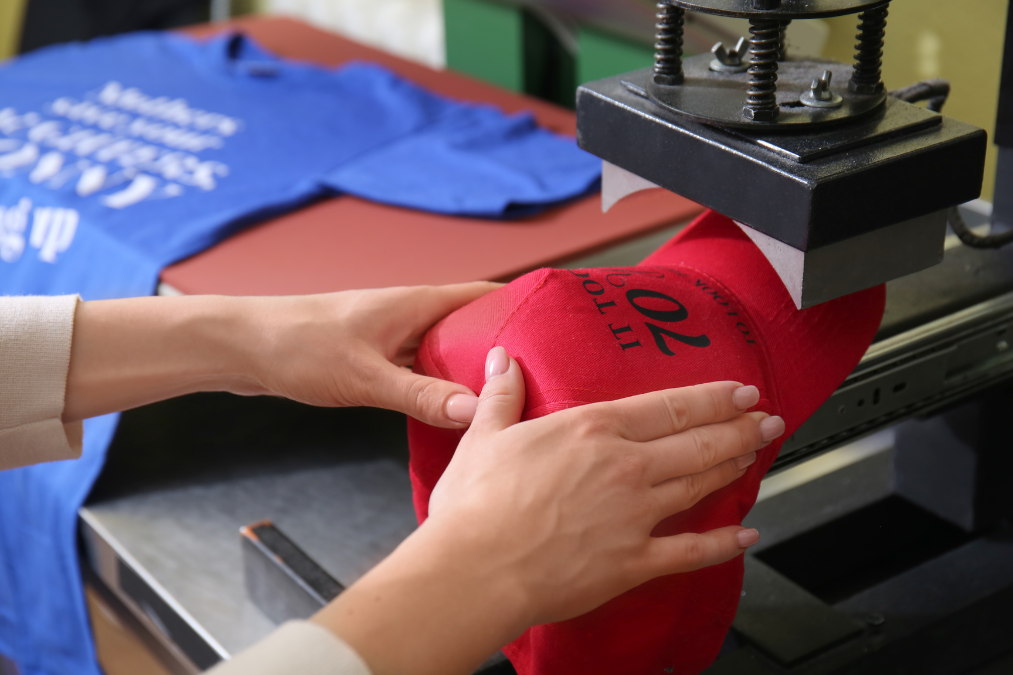
What is print-on-demand dropshipping? Print on demand, also called POD, is the process of printing or creating a customized design for a product and selling it under your brand name. Simply put, you create your own designs (pictures or logos), and the print provider uses them to customize white-label products. You then sell these products under your own label or brand on a pre-order basis.
Selling custom print-on-demand products is quite a popular direction in dropshipping. It allows you to offer both unique items under your brand and products customized with a design of the buyer’s choice (the buyer chooses one of the design options). Some of the most popular pod products categories are:
- T-shirts, hoodies, denim jackets
- Sweatpants, leggings, and joggers
- Caps, mugs
- Notebooks
- Framed posters, picture puzzles
- Fridge magnets, clocks,
- Buttons, and pins
These are just a few categories, but you can see already that the product range is similar to general stores in terms of product variety.
One of the main advantages of print-on-demand stores is that you have the benefits of a product range of a general store combined with the branding and marketing capabilities of niche and 1-product stores. You can sell various goods and change your offer until you find your winning products. At the same time, you can promote your brand name without heavy dependence on your product offer. It is a win-win!
Print-on-demand is a great way for artists to monetize their talents or existing businesses to explore new product opportunities without serious risks. Learn more in our Shopify Print On Demand Drop Shipping Guide.
Business Extension
Many small and medium-sized businesses do not have an online presence, for example, brick-and-mortar stores. You can arrange with such retailers to resell their products online on their behalf and receive a commission percentage from each sale. That’s what business extension dropshipping is.
It seems simple, but it might be much harder to implement. To start, you need to establish trustworthy relationships with a business owner. Then you need to build a website, list all the products, promote them and build an online presence. Yes, this step is the same for all types of dropshipping. However, you must ensure that the fulfillment and logistic capabilities of the business you partnered with are sufficient to handle added online sales. This type of dropshipping is less popular because of these complications.
Business extension dropshipping has far greater long-term potential and is more lucrative than simply reselling cheap products, especially without a dropshipping agreement. That is if you manage to find a reliable partner that sells high-quality products and is willing to share the profits.
What is a dropshipping agreement contract?

You might notice that I mentioned dropshipping agreement. It is important enough to write a few paragraphs about it.
When dropshipping, the provider is usually unaware that you resell their products. Why should they, you might think? It is best to drop ship from suppliers that support dropshipping. Even better if they have a dropshipping program and provide a dropshipping agreement.
A dropshipping agreement is a contract between a business and a manufacturer or distributor of a product that the business wants to sell, in which the manufacturer or distributor (rather than the business) ships the product straight to the customers of this business. It is a legally enforceable agreement between a seller and a product supplier. A drop shipping agreement, also known as a reseller agreement, is an important contract that defines fundamental conditions of the seller-manufacturer relationship, including their corresponding rights and duties. To simplify, this type of contract allows sellers to resell products their manufacturers/suppliers provide.
When you are just starting with dropshipping, a contract may not be necessary simply because you don’t make enough sales for it to matter. But as your store grows, it will become necessary. Considering it, can you think of a big retail chain that isn’t in any agreement with its suppliers?
You already know that you don’t hold the inventory in this business model. Your supplier does it. They also ship products you sell to your customers. They are responsible for product quality, correct shipping time, the correspondence between products, and their photos or item descriptions. Any mistake your manufacturer makes will be a negative review for your store or a product return. And believe me, you want to avoid it.
That’s why arranging a business partnership with a supplier will benefit both sides. A formal agreement that specifies the consequences and costs of the situations where goods are delayed, damaged, or missing will be utterly handy. Entering into dropshipping agreement often comes with benefits like better pricing, custom packaging, and better fulfillment terms. Amazon has no dropshipping program and does not provide a reseller agreement.
You can learn more about reseller agreements in my Dropshipping Agreement Contract Ultimate Guide.
Is dropshipping worth it?

So now that you know what dropshipping is, its benefits and downsides, the question is: is dropshipping worth it? The short answer is yes; almost any dropshipping store can be profitable given the right circumstances.
There was a study back in 2019 where Research and Markets, a global market research store, executed a Dropshipping Market Forecast from 2020-2027. It showed that dropshipping market segments into four major regions: North America, Europe, Asia-Pacific, and the Middle East.
Asia, alongside India, leads the global dropshipping market with more than 31.9% revenue share, followed by Europe and North America. Users in these countries incline toward online shopping, which attracts sellers to open up more stores.
Furthermore, as previously mentioned, dropshipping is one of the cost-effective models for entrepreneurs to start an eCommerce business. It enables an entrepreneur to sell products online without having to carry inventory. It is the best way to start building your business without investing significant capital and dealing with providers to purchase inventory stock from them in advance. And there is a massive market for dropshipping!
The good news is that with careful planning and consideration, you can overcome most of these obstacles and build a thriving, profitable dropshipping business. Dropshipping could be a highly profitable business with the right niche, a strong marketing strategy, and superb customer service.
Now it is time to look into what is Amazon!
What is Amazon and what is Amazon arbitrage?
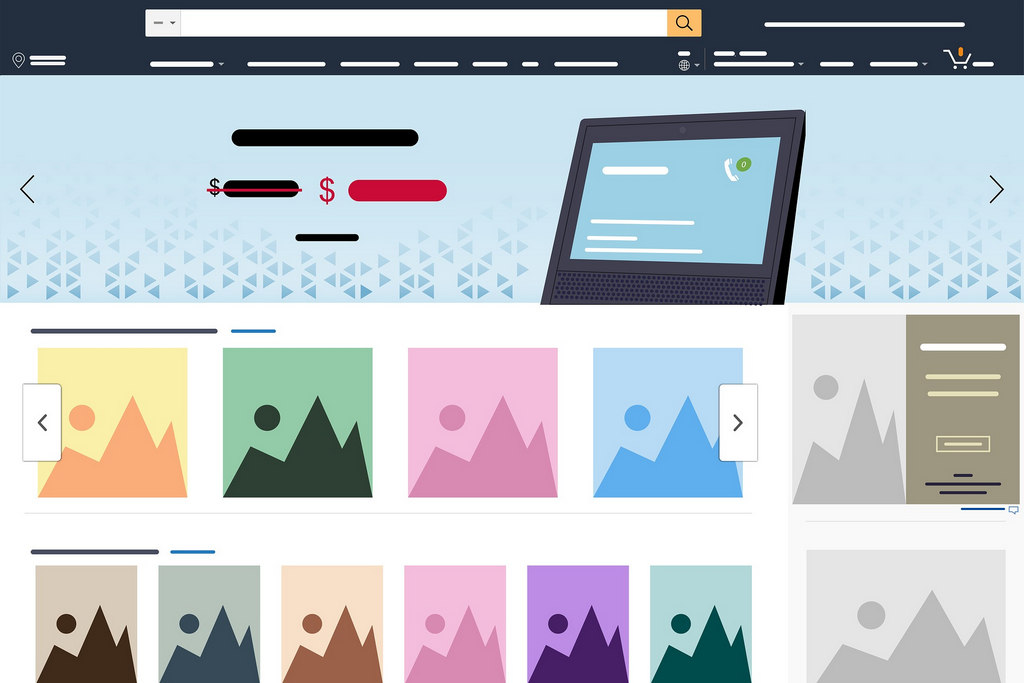
Amazon is one of the world’s largest e-commerce platforms, and for a good reason. This online retail giant can sell anything under the sun with guaranteed 2-day shipping and reputable buyer protection. It is the most popular eCommerce platform that offered over 75 million products across all its marketplaces in 2021.
Being the best, it is no surprise that it attracts every single reseller in the world like a magnet. Some sellers want to try selling on Amazon. Others want to dropship from Amazon to other marketplaces, which is much easier.
Here are 10 interesting facts about Amazon you might want to know:
- 9 out of 10 online consumers visit Amazon to price-check products.
- Amazon employs over 1.3 million people around the world.
- Amazon has over 300 million active customer accounts.
- 58% of Amazon sales come from third-party sellers.
- Over 126 million mobile and 42 million desktop unique visitors in the U.S. visit Amazon stores each month.
- It takes three minutes for shoppers to complete 28% of Amazon purchases. 50% of orders finish in under 15 minutes.
- Amazon scored 78 out of 100 ASCI points (American Customer Satisfaction Index) in 2021.
- Amazon’s annual net income for 2021 amounted to 33 billion U.S. dollars, a 56.41% increase from 2020.
- The most popular shopping categories on Amazon are electronics, followed by apparel and footwear.
- The Home and Kitchen product category is currently the most popular among businesses selling on Amazon.
These facts show just how huge and popular Amazon is. No wonder everyone tries to take advantage of this retailer and get a slice of its pie.
What is Amazon Prime?
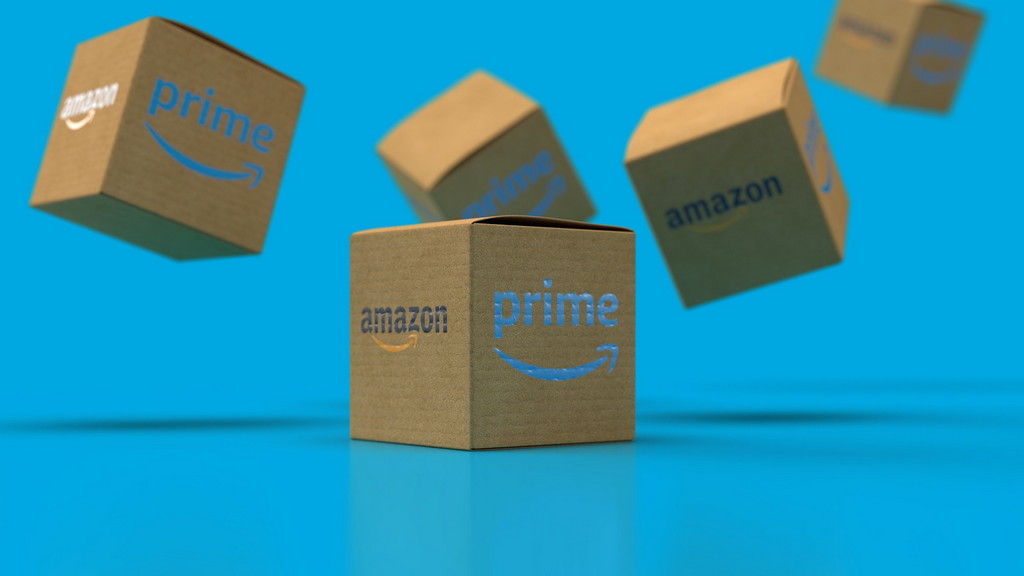
Amazon Prime is a subscription program that gives subscribers access to different Prime member-exclusive perks. You get such benefits like:
- fast, free delivery;
- exclusive sales like Prime Day and Prime Early Access;
- access to multiple streaming and digital services.
The membership costs $14.99 per month or $139 per year after 30 days trial. Currently, there are nearly 200 million Prime members.
Prime shipping
Prime Delivery includes the following options:
- One-Day Shipping – Free.
- Two-Day Shipping – Free.
- Same-Day Delivery – Free on qualifying orders over $25 in certain cities or $2.99 per order.
- Standard Shipping (4-5 days) – Free.
Free one- or two-day shipping on most Amazon products is what draws all kinds of resellers so much. Just think about it: for $14.99 per month, you get almost unlimited free delivery for millions of eligible products!
Amazon Prime Day
Prime Day is the biggest-selling event on the platform every year. This annual two-day deal is held around summertime, July specifically. For two days, Amazon hosts its own Black Friday. While it targets Amazon’s customers, dropshippers can also benefit by creating a sale day or week around the same time as Amazon. Plan your ads and promotion strategy in advance but do not use the name Amazon Prime.
You don’t have to wait for Prime day. Make your own! Customers love sales, contests and giveaways.
What is Amazon arbitrage?
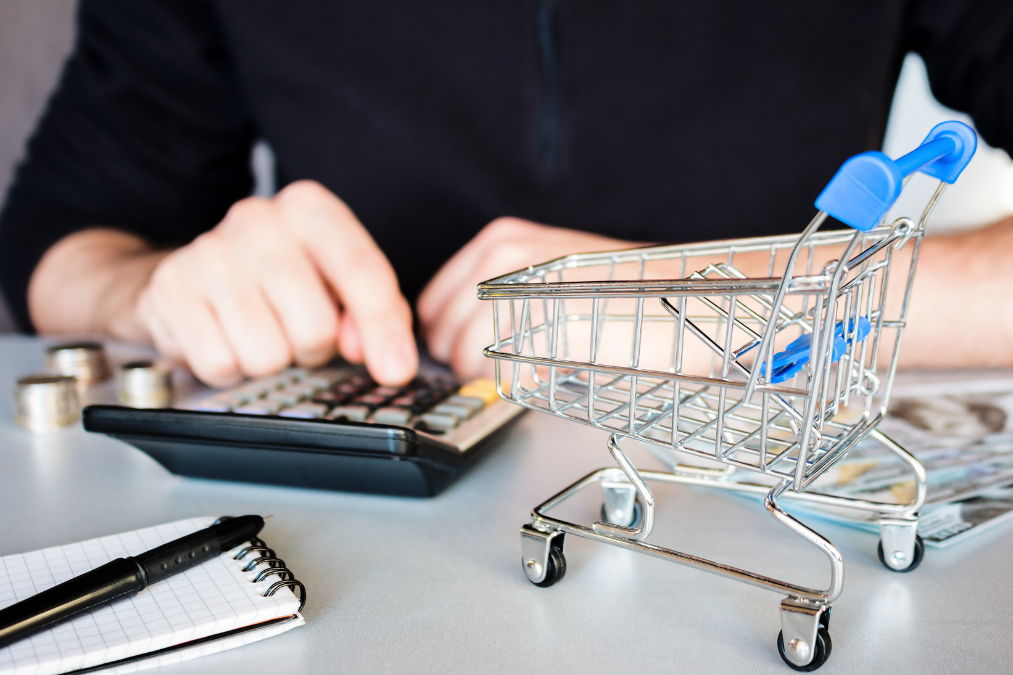
Dropshipping from Amazon, also known as retail arbitrage or online arbitrage, is the practice of reselling items from Amazon on other marketplaces or online stores. A dropshipper profits from the difference between Amazon pricing and the final selling price minus the selling fees. Once a buyer orders the product from a dropshipping store, the reseller purchases this product on Amazon. From Amazon, the product goes directly to the drop shipper’s customer.
The term arbitrage comes from the stock market, where the price of a company’s shares might differ in two markets where it is traded. It was adapted in eCommerce since such arbitrage occurs between marketplaces. For example, if an item costs $10 on Amazon and $15 in your online store, you can profit from the $5 arbitrage difference.
Now, you need to understand that while Amazon arbitrage is also called dropshipping, it is not “classic” drop shipping. Despite some similarities between dropshipping arbitrage and classic dropshipping, these two practices are different. Here is why:
Classic Dropshipping
- The seller and his supplier arrange a dropshipping agreement.
- The supplier is usually a wholesaler or manufacturer.
- The products are available to businesses at a wholesale price.
- After a sale, the dropshipper asks the supplier to ship the item directly to the buyer. Then the seller is charged the agreed price to their account.
- The seller pays the supplier according to the terms agreed upon in a reseller contract.
- It is a business relationship that is totally transparent to both parties.
Amazon Arbitrage
- No business relationship exists between the reseller and the Amazon platform.
- The Amazon sellers do not know their products are being resold.
- The products are available to anyone at retail prices.
- After a sale, the dropshipper orders the product from an Amazon seller, usually saying it is a gift and providing the buyer’s address to complete the order.
- The arbitrageur has to pay the Amazon seller immediately to complete the purchase (dropshipping agreements often allow paying later, once per month, etc.).
In both cases, dropshippers do not purchase any stock in advance and place orders only after selling products in their dropshipping shops. The benefits are similar for both models, but the relationships with product suppliers are not.
Amazon FBA vs Dropshipping
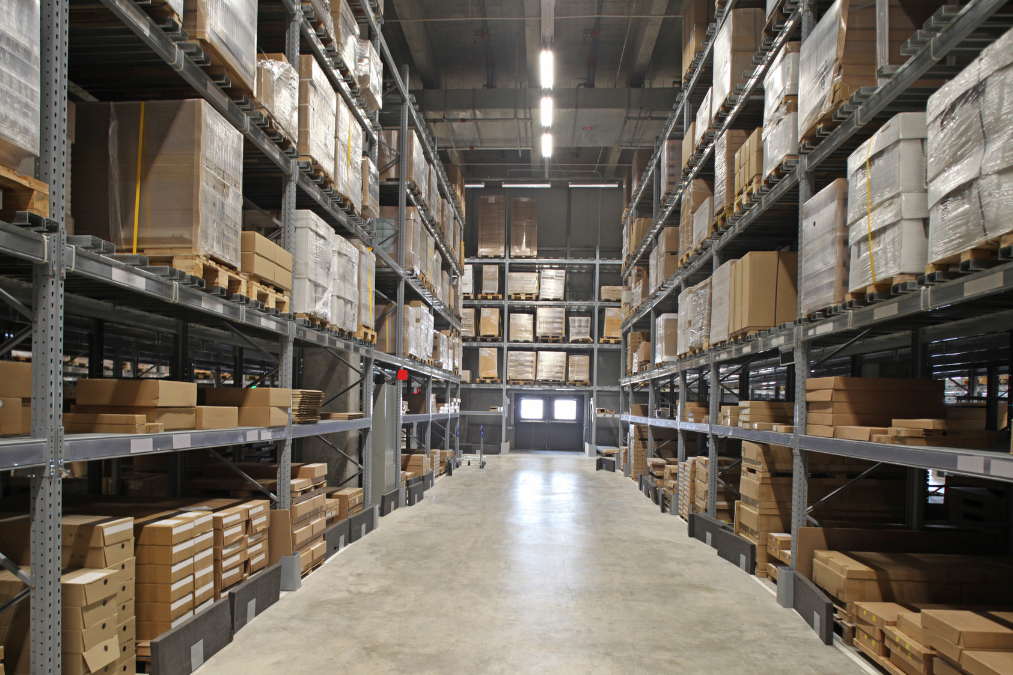
Firstly, let’s discuss what Amazon FBA is if you do not know already.
Amazon FBA (Fulfillment by Amazon) is the fulfillment service provided by Amazon. Businesses that use FBA purchase products and ship them to Amazon warehouses, where they are stored until sold. When a customer makes a purchase, the product is picked, packaged, and sent directly from the FBA warehouse to them. Amazon charges fees for this service based on the product size, weight, storage time, etc.
Sellers can use FBA to ship products sold on any eCommerce platform, not only Amazon. For example, when selling on Amazon and Shopify, you can use FBA to fulfill Shopify orders, not just Amazon ones. It is known as Multichannel Fulfillment (MCF), and it is more expensive than using FBA to fulfill Amazon orders. Orders shipped through MCF come in an Amazon-branded package, giving the impression of reselling arbitrage. However, it isn’t.
By the way, until 2016, Amazon allowed shipping MCF orders in plain packaging.
When doing Amazon arbitrage, a dropshipper does not purchase any inventory and only buys after making a sale. Confusingly, the order often ships from Amazon FBA, but that is because the Amazon seller uses the FBA services. It has nothing to do with a dropshipper.
Similarly to dropshipping, FBA has an advantage in that you don’t have to worry as much about logistics. Instead, you can focus on product research and sourcing, marketing, and making sales. Another advantage of FBA is that Amazon built a reputation and trust. Remember me mentioning 78 ASCI? Amazon is more recognized and trustworthy than any dropshipping store you create.
FBA has its drawbacks too. The most important for us is that you have to buy stock upfront. When dropshipping, you purchase goods after you make a sale, but FBA requires you to buy inventory upfront and send it to a warehouse for storage. And if your product stock sells slowly, you pay Amazon storage costs or product removal fees for warehouse clearing.
Can you dropship from Amazon?
Yes and No. Amazon arbitrage is quite an ambiguous practice. Reselling from Amazon is legal, and no explicit laws or policies prohibit this business model or strategy. Once you buy a product, it is yours. You can do with it whatever you wish, including reselling it. But it is against Amazon’s Terms. There is also an ethical issue when reselling from Amazon:
- Buyers who receive items in Amazon packaging might feel fooled, especially if they purchased something in your store for $60 and then found it on Amazon for $40. When these consumers realize that you are reselling from Amazon, they frequently leave bad reviews and ratings or return the products.
- Amazon sellers may feel manipulated when they discover someone is reselling their products and profiting from them. However, I should point out that situations like these are rare. Most Amazon sellers are glad to make a sale and do not care what you do with their products.
Here are the main things to consider when thinking about dropshipping from Amazon to Shopify:
Cons of dropshipping from Amazon
Against Amazon Terms
Dropshipping products from Amazon via Prime Delivery is against their terms and conditions. According to the policy, “Prime members are not permitted to purchase products for the purpose of resale, rental, or to ship to their customers or potential customers using Prime benefits.”
It is not surprising. Amazon Prime is a specialized service for loyal customers who order a few items per month. It was never intended for dropshippers ordering hundreds or thousands of products monthly. Simply put, Amazon is not interested in shipping thousands of products via expensive delivery for such a low fee.
Branded Packaging
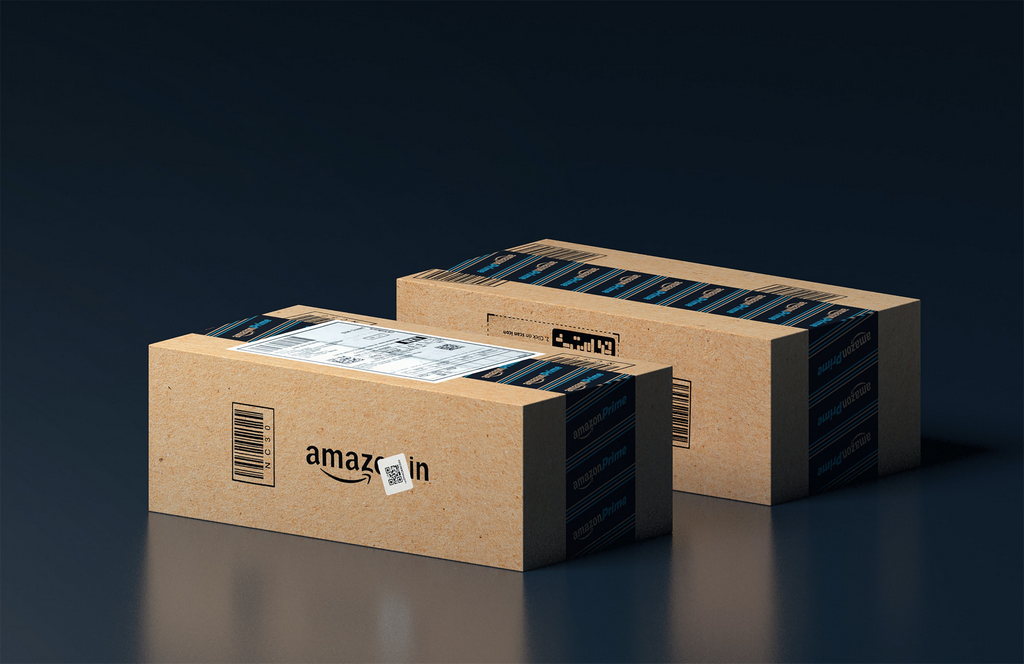
Another strong reason to avoid dropshipping from Amazon to Shopify is that all packages come in branded boxes with invoices. You can avoid invoices by marking orders as gifts, but they still come in boxes with Amazon logos all over them. The only real solution here is to use third-party services for repackaging, which leads to additional costs and potentially reduces your profits. It will also increase shipping time. The mediocre solution, at best.
Copyright and Intellectual Property
Many branded products, especially expensive and luxury goods, require you to obtain permission before you can resell them. And if you ignore this, rights holders will eventually find out and demand that you cease reselling their goods. That is the best-case scenario. In the worst case, Shopify will close your store and permanently ban you from the platform.
Do not think that you can avoid this. Many companies have legal departments whose sole purpose is to find unauthorized resellers of their merchandise and shut them down. And if you ignore the prohibition from a rights owner, they might sue you.
Managing Inventory
Another consequence of the popularity of the platform. There are a lot of third-party sellers on Amazon that compete for the same products – you can see that most items have multiple offers, prices and delivery options. It causes products to change prices and stock constantly, sometimes a few times a day. It makes it very difficult to manage your inventory as it requires constant prices and stock checks. This issue can be partially neglected by using dropshipping automation software. I would say that dropshipping from Amazon to Shopify is not possible without automation once your store starts growing. Inventory updates are too frequent.
Fierce Competition
As I previously mentioned, because of its advantages, Amazon is immensely popular and attracts all kinds of sellers trying to take advantage of this retailer. It causes high competition among dropshippers too.
Amazon is among the most popular US dropshipping suppliers, and different marketplaces are overflooded with Amazon products. If you search for a product on eBay, approximately half of the results will be cheap Chinese products sourced from AliExpress, CJ Dropshipping, and other similar sources. You can tell that by the low prices and longer shipping times. Around the third will be sourced from Amazon (higher prices, fast shipping), and the rest are from Walmart, Home Depot, etc. You will get a rough time finding your niche, especially when building a general store. Also, because of the competition, you will have to compete in prices, so your profits will be lower too, and you’ll have to compensate for that with higher sales volumes.
These are the main reasons why you should avoid dropshipping from Amazon to Shopify. I decided to write about the drawbacks first so you can see the risks. If you are ok with all this, we can proceed with the pros of dropshipping from Amazon.
Pros of dropshipping from Amazon
Prime Shipping
Free, fast shipping is probably the main reason why people do Amazon arbitrage. Yes, it is against the policies, and every day many seller accounts get banned for abusing it. But it is just too good not to use it. Do not get me wrong – I do not say this is right or anything. I’m pointing out why people risk dropshipping from Amazon.
Most shoppers prefer paying more for products with 2-5 days shipping over paying less and waiting 15-45 days. And only a few retailers offer such shipping services as Amazon. The same goes for returns – imagine selling a product and waiting 30 days till your customers receive it and then having to return it to China and wait another 30 days. Terrible!
You just cannot beat free 2-day delivery, period.
A Huge Number of Products
Amazon sells millions of products from all imaginable categories. It has everything you might be interested in, whether general merchandise or something specific. You can browse through numerous product categories, and each one has tens of sub-categories with hundreds of products.
Product Quality
Whether an item is sold by Amazon or a third-party seller, all products there are of high quality. Amazon has very high standards for the products it offers. Most items have an exceptional price-to-quality ratio. The same goes for third-party sellers – Amazon has strict requirements for those who want to sell on the platform. The fierce competition encourages sellers even more. Of course, there is no 100% guarantee that a product will not be faulty, but the overall quality is one of the highest on the market.
These are the main reasons why people start Dropshipping from Amazon to Shopify. As you can see, Amazon is far from being a dropshipping-friendly supplier. Still, it is a viable source of high-quality products with fast shipping. If utilized correctly, these are huge advantages.
If you are considering Amazon alternatives, check out these US Dropshipping Suppliers.
What is Shopify and how does it work
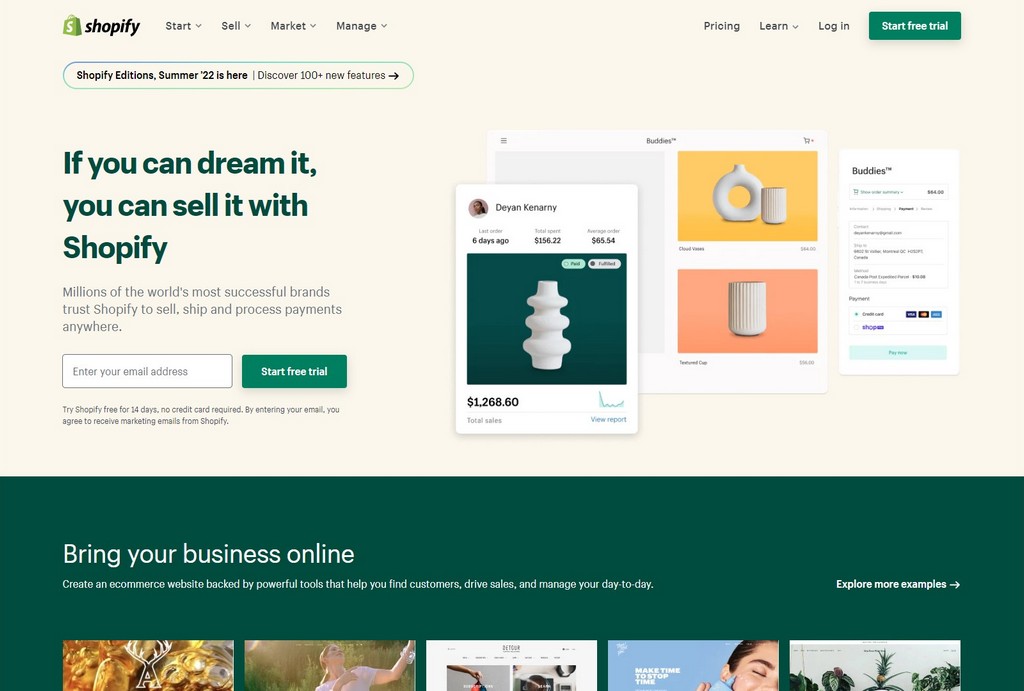
Shopify is one of the most popular SaaS (Software-as-a-Service) eCommerce platforms available on the market. It is beginner-friendly, affordable, and, at the same time, powerful. It combines both the simplicity of usage with high flexibility. You can start with a small online shop with basic functionality and grow it into a big dropshipping store with a powerhouse of commerce features.
Shopify made eCommerce accessible for everyone – almost anyone can run a web store today. Previously, if you wanted to open an online store, you needed extensive knowledge (hosting, domain, URL, DNS, etc.) as well as financial resources (buy hosting, develop a website or hire a specialist to do it, and establish an online shop).
All of this is in the past. Shopify transformed all the hassle into a simple procedure of registering and building your online store with one of the pre-built themes – the entire process takes less than an hour.
What is Shopify dropshipping?
So what is Shopify Dropshipping? Shopify dropshipping is a low-risk business model where you sell items that you actually do not have in stock. Only after you sell them to your customers do you buy those items and ship them to the buyers. Sounds familiar, right? That’s because I copy-pasted the paragraph from the beginning of the article!
There is no such thing as “Shopify Dropshipping”. It is the same dropshipping as usual. The only distinction is that you build your dropshipping store on the Shopify eCommerce platform. You can run a store on other platforms, such as BigCommerce or WooCommerce, and it will work just fine.

The reason why you might come across the term Shopify Dropshipping is because of the immense popularity of Shopify. Most eCommerce entrepreneurs start with this platform. Thus, it is correct to say Dropshipping on Shopify instead of Shopify Dropshipping. Ok, nerd. But what makes Shopify so popular?
While Shopify is not the only solution available on the market, it is among the best due to its affordability, simplicity of use (which requires minimal configuration), available features, security, and it is mobile-friendly (mobile commerce is on the rise). One advantage is related to the service’s popularity: the platform has a plethora of extensions (free and paid), and new Shopify plugins appear every day.
Want to see what a good Shopify dropshipping store looks like? Here are 35 Shopify Dropshipping Store Examples to Learn From.
Why dropship on Shopify? The benefits of Shopify
Shopify is one of the most popular eCommerce platforms, but it is not the only one. What makes it one of the best? What are the benefits of Shopify?
Simple Installation & Setup
Various guides often state that you can set up a Shopify store in under 15 minutes. It is true if you consider a store to be a nearly empty website with one product or the inscription “Hello, world!”. However, it is indeed that simple, and you can create a fully functional, attractive Shopify store filled with products in a few days.
Easy to Use
Shopify is a hosted dropshipping platform: it aims at average internet users without technical knowledge as the target auditory. It also requires very little time and effort to learn the platform. Just register, subscribe, choose a theme and start filling your store. Their back-end interface is the most logical, intuitive, and easy to navigate.
eCommerce Features
Overall, Shopify has everything most sellers need by default: it has an email marketing tool so you can connect to your customers, discount codes and cart abandonment recovery functionality, multi-channel integration options (Instagram, Facebook, Amazon), customizable checkout, sales analytics tools and revenue reports, and many more.
eCommerce SEO is where Shopify might be lacking. It allows editing title tags and meta descriptions but not URLs – there will always be a subfolder structure in your blog URLs.
Being extremely popular, Shopify has a plethora of extensions (free and paid), and new plugins appear every day. Currently, there are over 7000 plugins available on the Shopify app store, with over 4000 offering a free plan. Shopify plugins allow you to completely transform your online store and implement all the features you might need.
As your Shopify dropshipping store grows, you will have to upgrade it with plugins. Here are the Must Have Shopify Apps Your eCommerce Shop Needs.
Scalability
Shopify is an easily scalable dropshipping platform – you can scale your business up or down by picking a different Shopify plan. It means you can start with a small 10-product store, then expand it to 100 products, then to 1000+ products without much headache.
As with SaaS software, the platform provider handles everything tech-related. So when scaling your Shopify store, you don’t have to worry about the architecture, equipment, or other services. Still, you might need to install additional plugins for extra features to handle more customers, sales, fulfillment, etc. But it is a financial matter, not a technical one.
Scalability is one of the main points for dropshippers to consider when choosing a dropshipping platform.
Customer Support
It is impossible to have an online store and never face any issues. You will eventually run into tech issues that require immediate technical assistance from the e-commerce platform provider. When this occurs, you’ll want to contact a dependable, qualified support team familiar with the platform. You want to resolve any technical issues that might happen quickly and efficiently because time is money.
Shopify provides exceptional customer support. It offers 24/7 customer support via different contact channels: email, phone, and live chat. It also has its own official forum where users can ask for help.
Being SaaS, Shopify requires a monthly subscription: the plans range from $29 for the Basic subscription to $299 for the Advanced plan. There is also the Shopify Plus enterprise-grade subscription for large businesses. You can try it for free during the 14-day trial period.
Be aware that Shopify charges fees for each sale if you use an external payment system instead of Shopify Payments. You might also want to purchase a theme for your store and install a few Shopify extensions.
How to start dropshipping from Amazon to Shopify
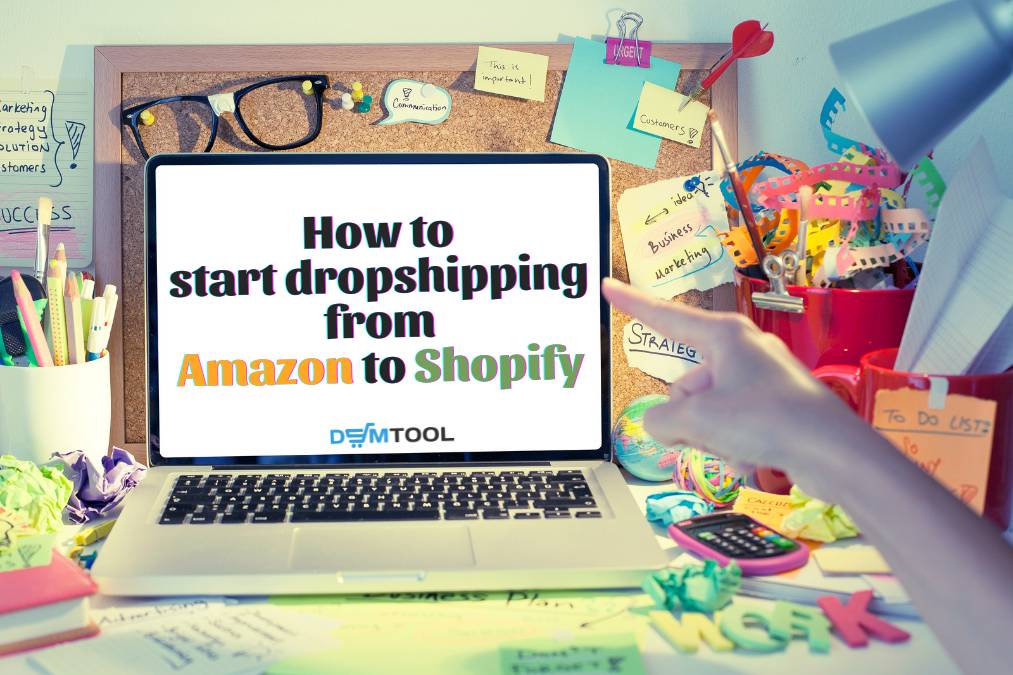
So here we are! Now that you know what dropshipping, Amazon, and Shopify are, we can mix all the ingredients into an Amazon-to-Shopify Dropshipping pie.
Step №1: Conduct dropshipping product research
Undoubtedly, you can set up your store correctly, have a great design, and, sometimes, even start with a good selling rating. But if you won’t do deep dropshipping product research, all the rest would not make much sense. Even worse, it can cost you your business.
You might get ideas on making money from your interests or hobby, or you can research demanded and profitable niches. In my opinion, you must do both. Pick a product niche (sub-niche even better, lower competition) that interests you, but make sure it is in high demand in the market. A perfect product is:
- high in demand;
- low in competition;
- solves a problem or offers a solution;
- has a wow factor.
A product does not need to correspond to all four factors but no less than three.
Keyword Research
Begin the keyword research by creating a list of keywords for your product and potential markets. It will help you to focus on your niches.
Start by defining future demands, then explore keywords for those markets. Try to go much deeper into the keywords, their variations, and related keywords to learn more about their success over time. You can try Google Keyword Planner free tool dropshippers use for this.
Determine Product Trends
Combine the list of possible keywords with trend data to determine whether a keyword is increasing or losing popularity. You can use Google Trends (also free) to determine the popularity of a specific keyword over the last few years. It should help to gain confidence to proceed with your product decision.
If a product looks to be losing popularity (demand), return to the previous white sheet and add new options. But if the trend chart is rising, keep going.
Calculate the Profitability
It is good if a product is popular but do run some math first to determine whether you can profit from reselling it.
Running a profitable Shopify dropshipping business requires relatively high-profit margins because you will have to pay for a storefront, marketing, taxes, and possible supplier fees.
You want to sell at a price of at least 40% more than the initial cost. Some dropshippers even go as high as 2x or 3x the wholesale price. It is normal because you can offer quality features and services for low-cost products, and people will buy them at that price. Of course, do market and distributor research to see how much people are selling for. You can use the Shopify profit margin calculator for easy profit and price calculations.
Step №2: Signup on Amazon and Shopify
Register on Amazon
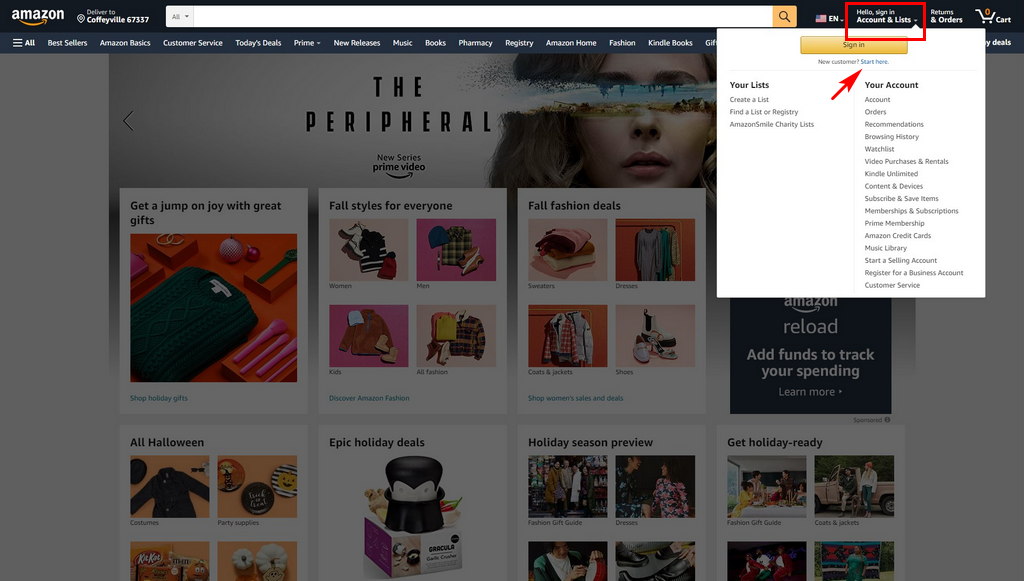
The process of creating an Amazon account is pretty simple. Go to the Amazon website, hover over the Hello, sign in button, and press Start here. Follow the simple sign-up procedure. You need a regular buyer account for this dropshipping model. Many dropshippers also join Amazon Prime to take advantage of Prime shipping. However, as previously stated, this is against Amazon’s terms.
Register on Shopify
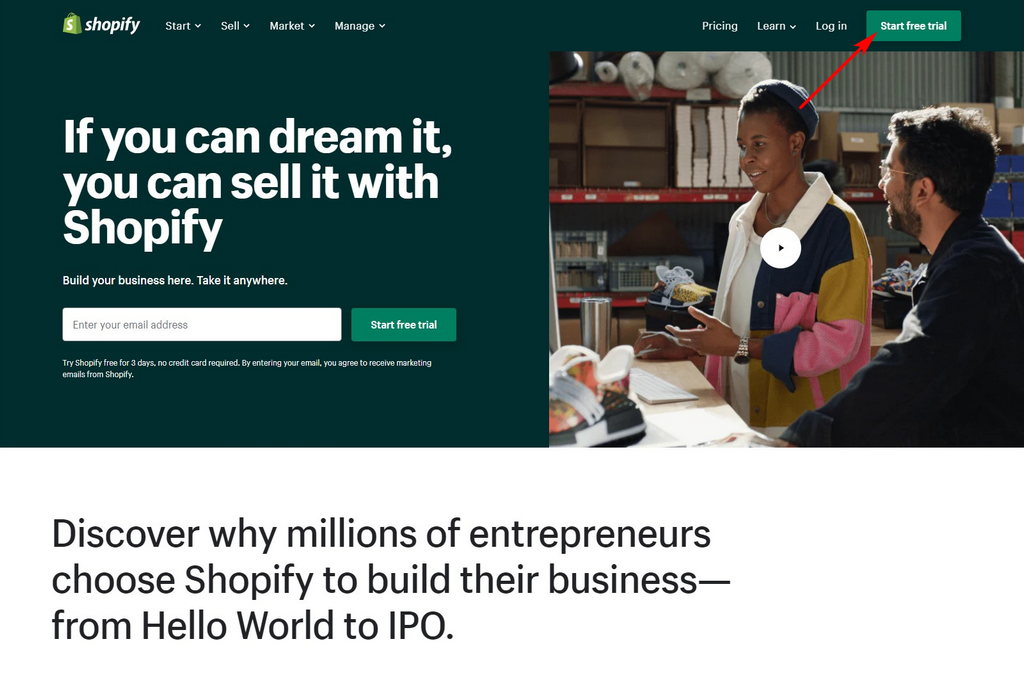
Before signing up on the Shopify platform, you have to pick a name for your store. It might seem trivial but this is very important. Make sure your store name has excellent branding potential. It is one of the first things your customers will see and what they remember when doing business with you.
Signing up on Shopify is easy; you will have 14 days of free trial to try the platform before deciding if you want to continue. Start the trial by pressing the Start free trial button.

It will require only the basic information, including your email address and store name.
Step №3: Configure your Shopify dropshipping store
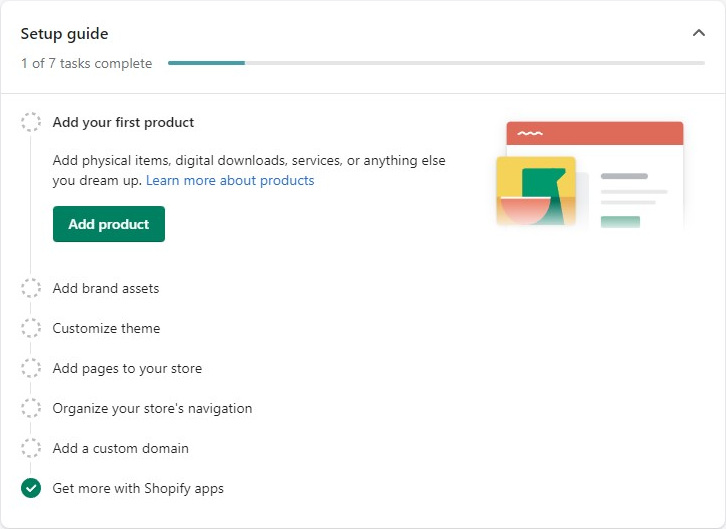
Shopify is a very user-friendly platform and provides customers with an easy-to-follow Setup guide. There should be no trouble when following the setup wizard, but there are a few points we can highlight:
Configure your Theme
The platform provides a default theme, but you can pick another one by going to Online Store > Themes, and customize it according to your preferences. Shopify has hundreds of robust themes you can try and test with a few clicks. Users can personalize their Shopify stores with text, logos, photos, and videos to complement the aesthetics of their brand.
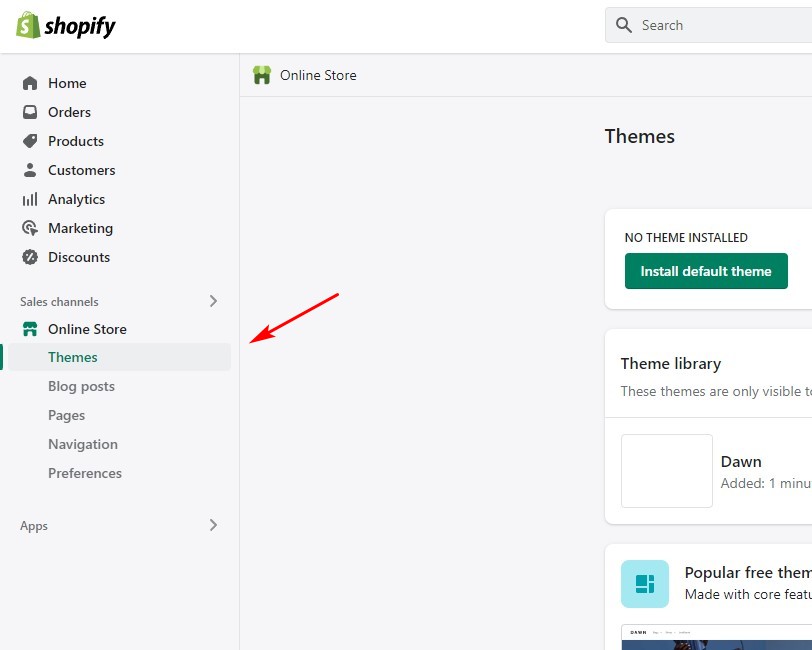
Setup a Domain Name
You’ll need a domain name to get your site running. You’ve got two options.
The first option is to purchase a Shopify domain that automatically adds to your store. It saves you time, especially if you don’t know about website hosting. Usually, these domains cost $15-100 annually.
Your second option is buying a domain for your store from a third party, such as GoDaddy. The drawback is that you need to do additional configurations manually (like setting DNS records).
Go to Settings > Domains to set up your payment options.
Setup Payment Options
A payment gateway allows you to take payments from your customers via your website. Setting up a trusted e-commerce payment gateway is crucial for winning your customer’s trust and confidence. All payment gateways are different, so you need to pick the one that suits you best.
Go to Settings > Payments to set up your payment options.
Configure Shipping Rates
Based on what products you sell, you need to update shipping rates on your store for accurate pricing. Shipping costs are calculated based on product weight, packaging, locations, carriers, profit, etc. Don’t forget to add supplier costs as well, as these are the expenses you pay the supplier to prepare and ship the goods.
Go to Settings > Shipping and delivery to set up your shipping rules.
Check out our What is Shopify Payments Guide to learn more about Shopify payment processing.
Step №4: List products
There are two ways you can list your products. The “usual” manual way or use software.
Listing Manually
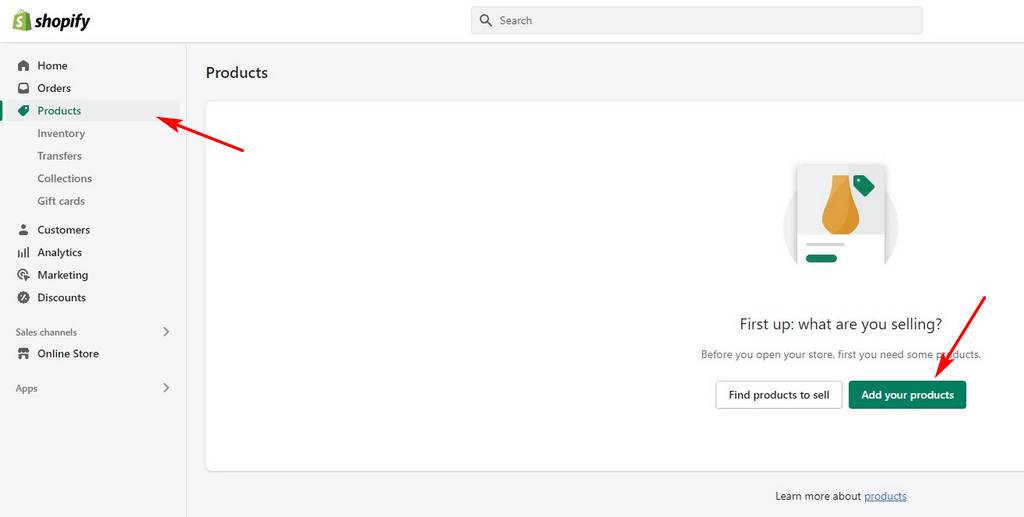
Go to Products to add your product. Make sure you include as many details as you can. Add catchy product titles and informative product descriptions, and use keywords. It will make it easier for customers to view and purchase products from your store. Do not forget to display your goods by uploading high-quality product images to showcase its features. Once done, press the Save button to finish listing your product.
Listing with Dropshipping Software
Software like DSM Tool allows you to import products in under 10-15 seconds with a single click – just press the button and all product details like titles, images, and descriptions are imported for the item and its variations when using the Rapid Lister feature. The Bulk Lister feature allows importing and listing thousands of products in a short time. Additionally, it allows you to schedule the publishing of listings on your eCommerce store so you can plan publishing work for next week or even the month.
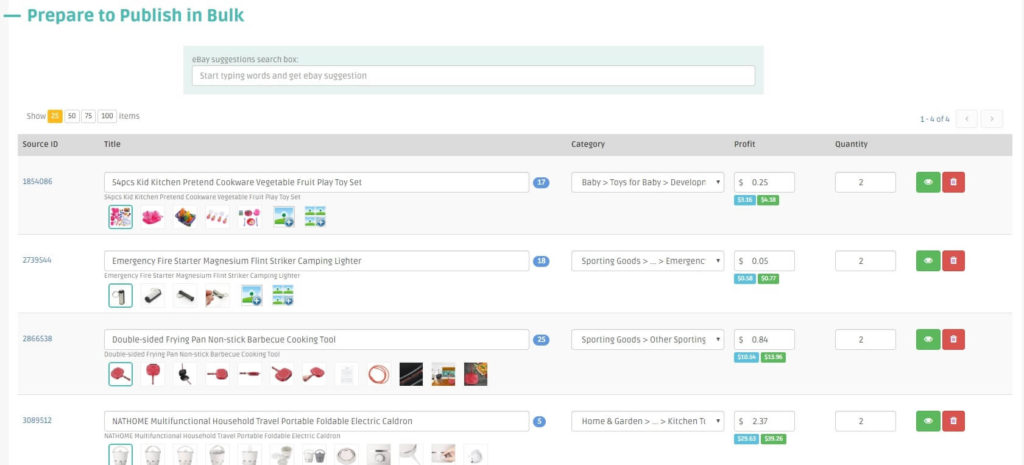
All software is different, but usually, they connect to Shopify stores by installing a related extension from the Shopify app store, or via an API connection.
Connect Sales Channels
Now that you have a Shopify store ready to go live, it is worth considering connecting it to other sales channels to reach more potential customers.
The Sales Channels feature allows you to connect your Shopify store to other marketplaces, like Facebook. You can even integrate a Buy button into almost any website or blog. The best part is that you can still keep track of orders, inventory, and reports through the Shopify Dashboard.
It is a great tool to grow your reach and boost sales by promoting your store on other platforms.
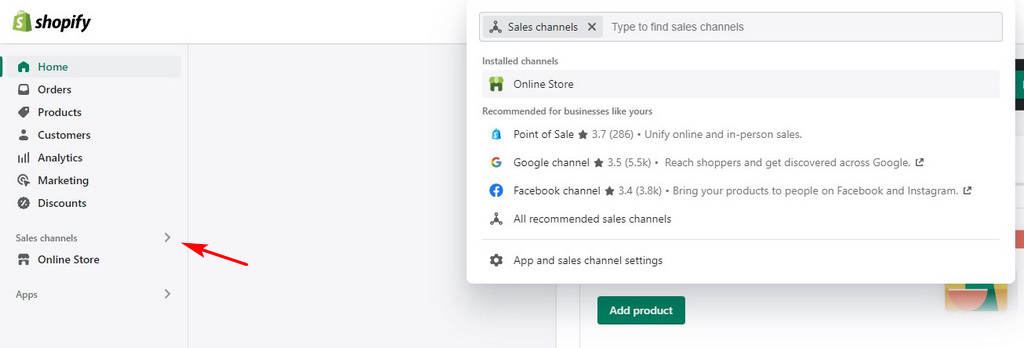
Press the Sales channels button and choose from the list of available options. Shopify makes recommendations based on your setting, location, etc., but you can add more channels by typing the name of the marketplace you are interested in.
You are ready! Make sure you test your store before launch to ensure it is both desktop and mobile-friendly.
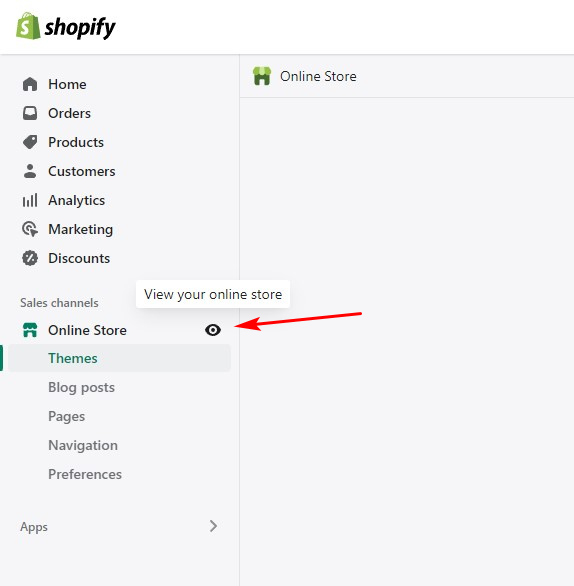
Can you connect Shopify to Amazon?
You might come across a few Shopify plugins mentioning connecting Amazon to Shopify. Yes, you can connect Shopify to Amazon as a sale channel to list your Shopify products on Amazon, like on Facebook or eBay channels. But you cannot connect Amazon to Shopify for importing products from Amazon to Shopify. Amazon prohibits this.
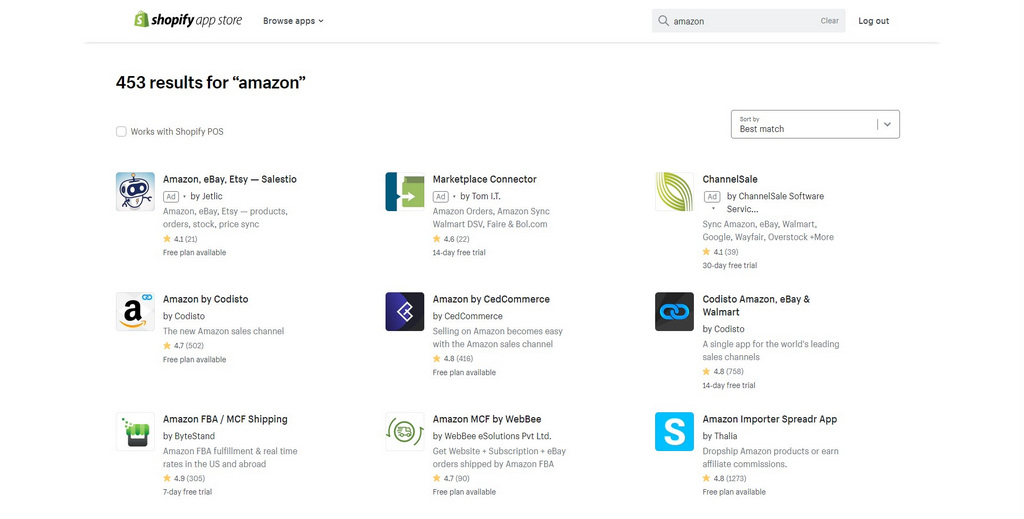
You have to import products manually. Or, if you want to import products from Amazon to Shopify with inventory updates, use dropshipping software like DSM Tool.
How to automate Shopify dropshipping

We live in the age of digitalization, automatization, and robotization when all the mundane tasks and processes are optimized or completely handled by computers and even robots – nowadays these things are as natural as cars and mobile phones. So it shouldn’t be surprising that you can automate dropshipping too, but to what extent?
Automated dropshipping is when time-consuming dropshipping tasks are handled by special software instead of a dropshipper. Dropshipping consists of many repetitive tasks that are vital for your success but very time-consuming and tiresome. Simple example – checking your products for prices and stock changes on sources, then making updates on your store. Very simple, yes, but what if you have hundreds of products? Thousand or more? Special software can do this in a few minutes instead of hours and days.
Here are some of the main reasons why you should consider automating your dropshipping business:
- Faster Listing Process
- Automated Inventory Updates
- Automated Order Processing
- Automated Reviews and Customers Feedback
Almost any dropshipping task, no matter how difficult, can be automated, but you will need more complex and expensive software to do such a job. Even if you are just starting a dropshipping business, I recommend investing in some simple, inexpensive software that will automate the most tedious tasks – it will make your job much easier and more enjoyable while saving valuable time.
Being one of the most popular dropshipping platforms, Shopify is compatible with the best dropshipping tools available in the market. All modern solutions support it.
If you are serious about Shopify dropshipping, you will need to automate your store at some point. Here you can learn about What Is Automated dropshipping?
Many dropshippers start with Shopify due to its numerous advantages. But to turn your one-page online shop into a big dropshipping store, you must utilize the Best Shopify Dropshipping Apps.
Final words

That was a long read, but we have made it! Well done! You learned about dropshipping, Amazon, Shopify, and dropshipping from Amazon to Shopify. To sum it up, consider the following:
Dropshipping is still a great way to earn money – it might serve as additional income or the primary source of earnings if done right. Well, you might have heard for the last couple of years already about the rapidly increasing popularity of dropshipping. But here is the thing, drop shipping keeps growing: new eCommerce platforms keep appearing, and so do marketplaces where you can dropship your products.
Amazon is not that great for dropshipping. The platform does not want people to dropship from them. To make things worse, Amazon does everything possible to prevent dropshipping from the platform. Dropshipping from Amazon can be profitable if done right. Many resellers earn good money by reselling from it, but this requires a lot of effort and planning. There are far better dropshipping-friendly suppliers eager for people to dropship from them.
As for Shopify, it is a great eCommerce platform for drop shipping. It offers plenty of features and is compatible with the most popular plugins, extensions, and third-party apps to support it. Shopify is a perfect choice for beginners; it is simple to use and has plenty of features for its price.
If you are not sure that dropshipping from Amazon to Shopify is your thing, consider selling on social media platforms – social commerce is booming.
That’s it, folks! Hopefully, you find this guide to be of use.

